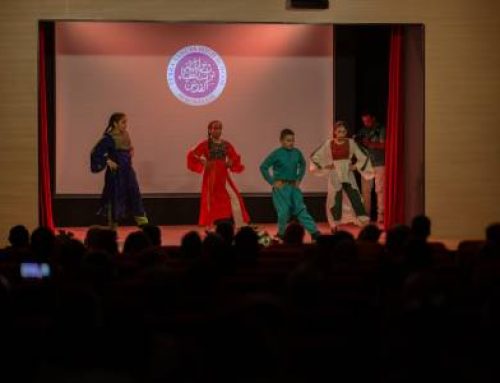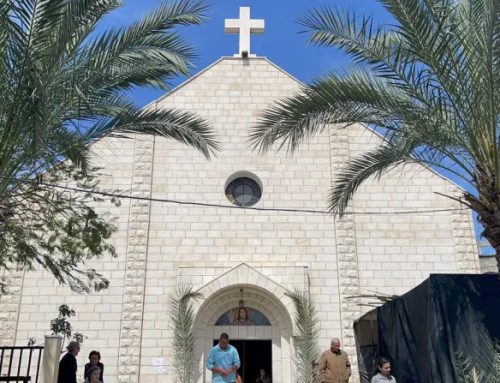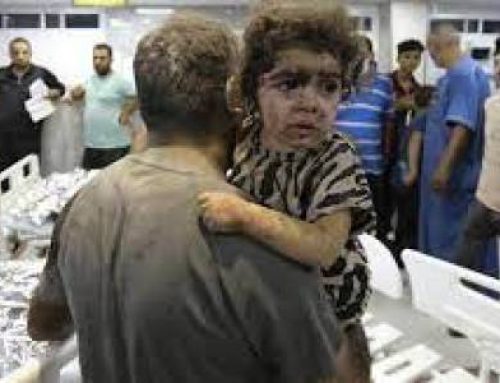Cardinal Leonardo Sandri, prefect of that dicastery, sent a letter with an appeal to recall this “commitment that dates back to apostolic times.”
He affirmed that “the Holy Land expects the brotherhood of the universal Church and desires to reciprocate it in sharing the experience of grace and suffering that marks her journey.”
“The Christians of the East are experiencing the actuality of martyrdom and are suffering because of the instability or absence of peace,” the prelate observed.
He continued: “The most disturbing sign of this is their inexorable exodus.
“Indeed a few positive signs in some situations do not suffice to invert the sorrowful tendency of Christian emigration which impoverishes the entire area, draining it of the most vital forces constituted by the young generations.”
“It is therefore up to us,” the cardinal stated, “to join the Holy Father to encourage the Christians of Jerusalem, Israel and Palestine, of Jordan and of the surrounding Eastern countries.”
He noted that “this appeal for the collection is inherent in the cause of peace, of which the brothers and sisters of the Holy Land desire to be effective instruments in the hands of the Lord for the good of the whole of the East.”
“The collection everywhere remains the ordinary and indispensable means of promoting the life of Christians in that beloved land,” the prefect affirmed.
Referencing Benedict XVI’s words in “Verbum Domini,” Cardinal Sandri affirmed: “The more we appreciate the universality and the uniqueness of Christ’s person, the more we look with gratitude to that land where Jesus was born, where he lived and where he gave his life for us.
“The stones on which our Redeemer walked are still charged with his memory and continue to ‘cry out’ the Good News.”
He added that “Christians who dwell in the land of Jesus and bear witness to their faith in the Risen One are called to serve not only as a beacon of faith for the universal Church, but also as a leaven of harmony, wisdom, and equilibrium in the life of a society which traditionally has been, and continues to be, pluralistic, multi-ethnic and multi-religious.”
Projects
The Holy Land Custody released a report about the projects it has supported over the past two years in its mission “to keep alive the liturgy in the places of worship, to take care of pilgrims, to enhance apostolic works, and support the Christian community” in that region.
Among the projects supporting the holy places were included the renovation of the Sanctuary of Bethany next to the tomb of Lazarus, the renovation of St. Catherine’s Church next to the Grotto of the Nativity in Bethlehem, and the planning of restoration works at the Shrine of the Transfiguration at Mount Tabor.
The custody supported the final phase of the recreation of the Kidron Valley at Gethsemane, as well as an archeological project in Magdala, where Mary Magdalene was born.
Other projects of restoration were undertaken at various sites in Jerusalem, Ain Karem (at the birthplace of St. John the Baptist), Jaffa, Nain (where Jesus resurrected a widow’s son), Tabga (Sanctuary of the Primacy of St. Peter), and Mount Nebo (Memorial Shrine of Moses the Prophet).
The custody also undertook several projects on behalf o the local community, setting up university scholarships and crafts workshops for youth.
It supported several initiatives in favor of families, such as a family counseling parish program, a medical assistance fund, and a housing project.
Parish constructions and renovations were undertaken in various communities in Jerusalem, Nazareth, Cana and Jericho.
Constructions were also undertaken at schools in Ramleh, Bethlehem, Jericho and Jordan.
The custody aided in housing development projects for the poor and young families, including the assignment of 69 apartments and the rehabilitation of 70 houses for Christian families in Jerusalem, the upkeep of houses for the poor in Bethlehem, the development of 124 apartments in Jaffa, and the construction of a residential complex with 80 apartments in Nazareth.





